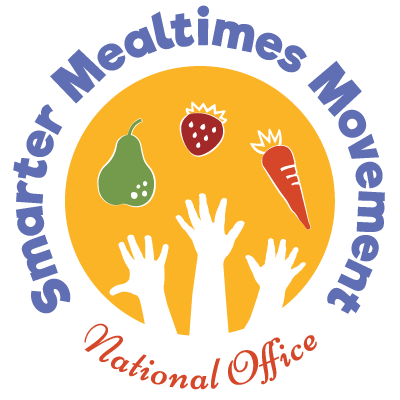
 In June 2017, the Smarter Lunchrooms Movement National Office introduced the Smarter Mealtimes Scorecard for early childhood education (ECE) settings created in partnership with the National CACFP Sponsors Association. Like the Smarter Lunchrooms Scorecard, the Smarter Mealtimes Scorecard is a simple, user-friendly tool comprised of research-based strategies that can be used by ECE staff to assess children’s meal environments. What distinguishes the Smarter Mealtimes Scorecard, is its straightforward application to childcare settings, its concise 20-strategy format, and its flexibility in implementation approaches.
In June 2017, the Smarter Lunchrooms Movement National Office introduced the Smarter Mealtimes Scorecard for early childhood education (ECE) settings created in partnership with the National CACFP Sponsors Association. Like the Smarter Lunchrooms Scorecard, the Smarter Mealtimes Scorecard is a simple, user-friendly tool comprised of research-based strategies that can be used by ECE staff to assess children’s meal environments. What distinguishes the Smarter Mealtimes Scorecard, is its straightforward application to childcare settings, its concise 20-strategy format, and its flexibility in implementation approaches.
Versatility
Designed with both licensed and unlicensed ECE settings in mind, the Smarter Mealtimes Scorecard strategies are applicable to a variety of childcare programs, from large childcare centers, to Head Start programs, to family childcare settings. Throughout the Scorecard development process, feedback was collected to ensure that best practices would be relevant in programs large and small and with varying degrees of available resources. In fact, many of the strategies can also be applied at home in a familial setting.
Flexibility
Due to the high variability of resources available to ECE settings, there’s no “single” way to check off each strategy. For example, when offering at least two types of fruits and two types of vegetables, the two options can be fresh, frozen, canned, or dried. Frozen and dried produce options are excellent alternatives for fresh, as they can be stored longer and don’t need to be consumed within a limited amount of time. ECE settings with less refrigeration space may opt to utilize economical canned or dried fruit and vegetable alternatives.
Displaying attractive, healthy food signage in the child care environment is another featured strategy. This signage can include standard decorations, like posters, wall art, and window clings. However, the criteria can also be met by putting temporary placemats or table cloths with colorful fruits and vegetables on the tables during mealtimes. This flexibility makes the environmental improvement strategy significantly more feasible to homecare settings that use the provider’s own dining room as a dining space. For more implementation tips, reference the Smarter Mealtimes Handbook.
Support
To stay up to date on new Smarter Lunchrooms (for K-12 settings) and Smatter Mealtimes news subscribe to the newsletter, featuring the most up-to-date research, webinars, and training opportunities. The Smarter Lunchrooms Facebook page also posts daily tips of the trade and news updates and the Smarter Lunchroom Buzz Facebook group is a platform where users can give and receive advice and share success stories among a community of dedicated professionals.
Smarter Mealtimes Movement resources are free, and can be adapted to whatever degree is right for the specific ECE program or setting. Join us in promoting healthy eating practices and making the healthy choice the easy choice for young children.
Download the Scorecard and support materials here: https://www.smarterlunchrooms.org/smarter-mealtimes
Contributors
Heather Hodson, Cornell University
Katie Baildon, Cornell University
Resources
For all Smarter Mealtimes resources and information visit: https://www.smarterlunchrooms.org/smarter-mealtimes
eXtension 2 Part Webinar: Smarter Mealtimes for Early Childhood Education Settings:
Part I: Introducing the Smarter Mealtimes Scorecard for Early Childhood Education Settings
Part II: The 20 Strategies of the Smarter Mealtimes Scorecard
